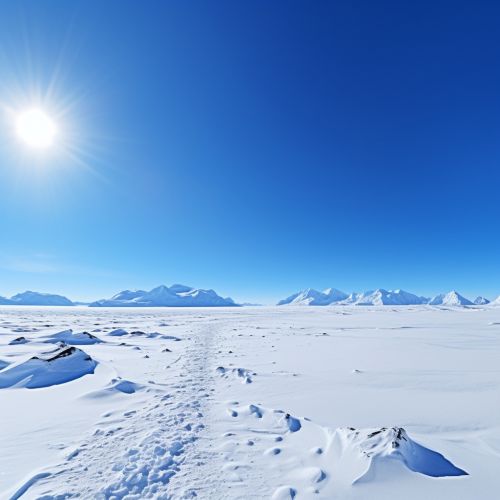Antarctica
Geography
Antarctica, the southernmost continent and site of the South Pole, is a virtually uninhabited, ice-covered landmass. Most cruises to the continent visit the Antarctic Peninsula, which stretches towards South America. It is known for the Lemaire Channel and Paradise Harbor, striking, iceberg-flanked passageways, and Port Lockroy, a former British research station turned museum. The peninsula’s isolated terrain also shelters rich wildlife, including many penguins.


Climate
Antarctica is the coldest place on Earth. It's so cold that it's almost completely covered by ice. The continent is covered by a permanent ice sheet that averages at least 1.6 kilometers (1 mile) in thickness. The temperature in Antarctica has reached −89.2 °C (−128.6 °F), or absolute cold. The coast is warmer. Coastal temperatures can reach -2°C in Summer and fall below -20°C in winter. The interior is colder; temperatures reach -20°C in summer and can plummet to -60°C in winter. As one moves from the coast towards the interior, the temperature drops, and the air gets drier.
Flora and Fauna
Despite the harsh conditions, several forms of life thrive in Antarctica. The fauna includes a variety of species such as the Emperor Penguin, the South Polar Skua, the Snow Petrel, and various types of seals. The flora of Antarctica is limited to about 350 species of mosses, lichens, and liverworts that survive in the coastal areas. Some algae live in snow, and others inhabit lakes.
Exploration and Research
The harsh conditions of Antarctica made it the last continent to be explored. The first confirmed sighting of the continent was not until 1820. However, the first landing did not occur for another 75 years. In 1895, a team led by Norwegian explorer Roald Amundsen reached the South Pole.
Today, numerous countries operate research stations on the continent. These stations conduct vital scientific research, including studies into the impact of climate change on the Antarctic ice sheet. The Antarctic Treaty System, established in 1959, prohibits military activity, mineral mining, nuclear testing, and nuclear waste disposal. It also supports scientific research and protects the continent's ecozone.
